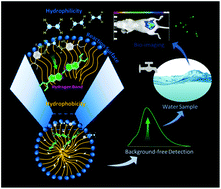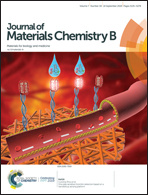In situ generated chromophore as the indicator for background-free sensing strategy of hydrazine with high sensitivity with in vitro and in vivo applications†
Abstract
A chromophore is essential to a classic molecular probe, but its intrinsic optical properties can trigger a spectral background, which is considered to produce a negative influence on detection sensitivity. Hence, developing spectral sensing assays with chromophores generated in situ by probes and analytes could realize detection. Herein, we elaborated a novel proposal based on the in situ condensation reaction between 4-diethylaminobenzaldehyde (DEASA) and hydrazine readily promoted by CTAB micelles, resulting in new chromophores with intramolecular hydrogen bonds generated in situ acting as indicators for hydrazine. A background-free detection pattern was, therefore, formulated, along with a relatively low detection limit of 0.42 nM. This avoided tedious preparation and the use of organic solvents during the experiments. In addition, extensive studies, including actual water/serum samples, living cells, and even mouse imaging, revealed that the DEASA probe and the well-designed in situ sensing scheme exhibited good performance regarding future applications in terms of sensitivity, anti-interference capability, and imaging stability.



 Please wait while we load your content...
Please wait while we load your content...